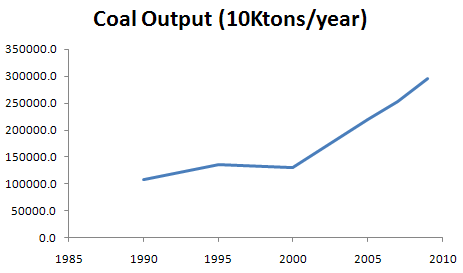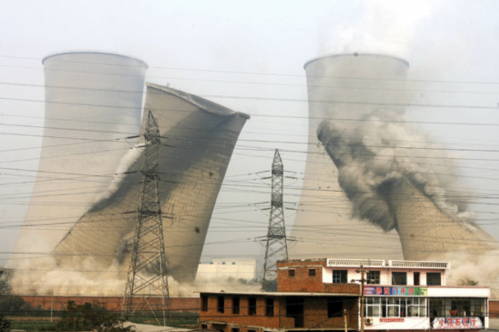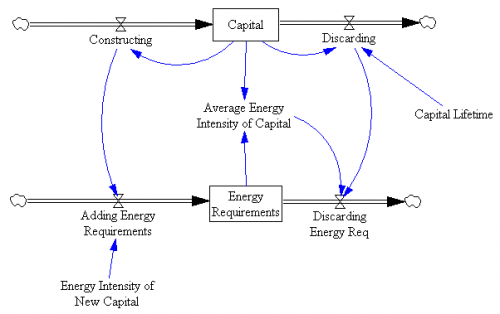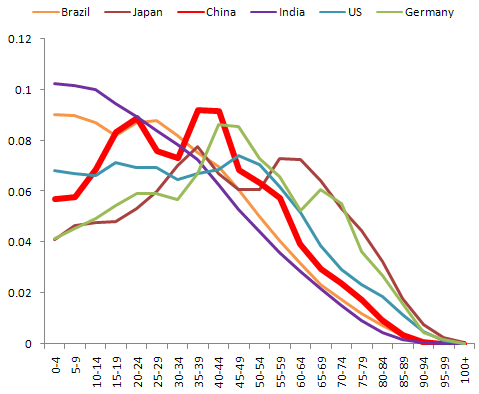Just after writing my last post on China, I found this remarkably candid SpiegelOnline interview with Pan Yue, China’s Deputy Minister of Environment. A few excerpts:
…
Pan: Of course I am pleased with the success of China’s economy. But at the same time I am worried. We are using too many raw materials to sustain this growth. To produce goods worth $10,000, for example, we need seven times more resources than Japan, nearly six times more than the United States and, perhaps most embarrassing, nearly three times more than India. Things can’t, nor should they be allowed to go on like that.
…
Pan: This miracle will end soon because the environment can no longer keep pace. Acid rain is falling on one third of the Chinese territory, half of the water in our seven largest rivers is completely useless, while one fourth of our citizens does not have access to clean drinking water. One third of the urban population is breathing polluted air, and less than 20 percent of the trash in cities is treated and processed in an environmentally sustainable manner. Finally, five of the ten most polluted cities worldwide are in China.
Pan: …Because air and water are polluted, we are losing between 8 and 15 percent of our gross domestic product. And that doesn’t include the costs for health. …
While I was building an electric power model for China in 2005, I saw estimates of 7% GDP losses from health impacts of air pollution, so this strikes me as plausible. One could argue that even 20% of GDP lost to pollution would not be a big deal, because it represents less than three years of growth. But that is to ignore a fundamental valuation problem: that increased material consumption is probably a poor substitute for lost environmental services and especially health problems. In a utopian world where China’s development path reflected individual preferences, are these the choices we would see?
8 to 15 percent is quite a bit more than the 3% in China’s Green GDP accounts, which in any case have been put on hold due to lack of support. On other measures, China’s HDI (a measure of life expectancy, literacy, educational attainment, and GDP per capita) is going up, but its GPI peaked in 2002. The World Bank shows adjustments shaving 16 percentage points off China’s national savings, but the net remains positive. China’s ecological footprint is in deficit territory.
SPIEGEL: But the economic growth fanatics in Beijing will still likely carry on just as before.
Pan: They’re still playing the lead role — for now. For them, the gross domestic product is the only yardstick by which to gauge the government’s performance. But we are also making another mistake: We are convinced that a prospering economy automatically goes hand in hand with political stability. And I think that’s a major blunder. The faster the economy grows, the more quickly we will run the risk of a political crisis if the political reforms cannot keep pace. If the gap between the poor and the rich widens, then regions within China and the society as a whole will become unstable. If our democracy and our legal system lag behind the overall economic development, various groups in the population won’t be able to protect their own interests.
This is crucial. Even communities in the developed world that experience rapid growth go through substantial pain. In part, that’s because growth puts pressure on resources (like open space, freedom from noise and pollution) previously regarded as free, for which property rights or other control mechanisms must be established. If institutions don’t keep up, conflict ensues.
And there’s yet another mistake in this thinking…..
SPIEGEL: Which one?
Pan: It’s the assumption that the economic growth will give us the financial resources to cope with the crises surrounding the environment, raw materials, and population growth.
SPIEGEL: Why can’t that work?
Pan: There won’t be enough money, and we are simply running out of time. Developed countries with a per capita gross national product of $8,000 to $10,000 can afford that, but we cannot. Before we reach $4,000 per person, different crises in all shapes and forms will hit us. Economically we won’t be strong enough to overcome them.
Counting on future growth to solve the problems of past growth is a classic escalation trap – Herman Daly’s “Hair of the Dog that Bit You” from the Catechism of Growth Fallacies in Steady State Economics. Daly cites Wallich, “Growth is a substitute for equality of income. So long as there is growth there is hope, and that makes large income differentials tolerable.” When the growth engine sputters, the social repercussions will be serious.





